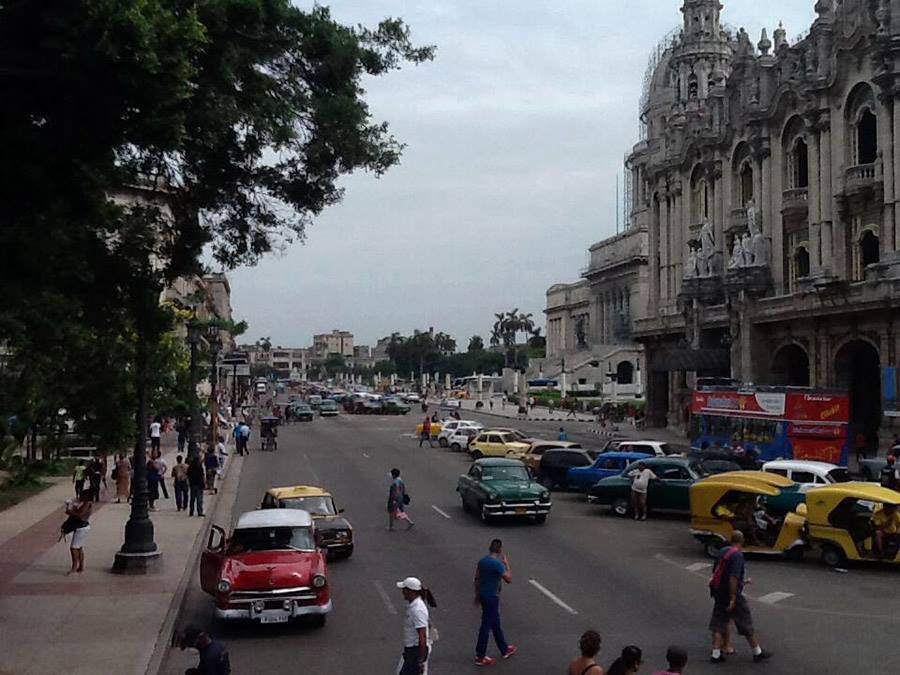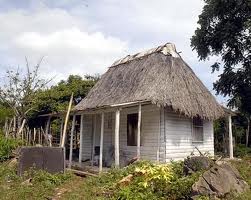Cerca del millón de viviendas no tiene servicio de acueducto; hay 18 mil cuarterías en Cuba.
Casi un millón de viviendas cubanas (955,885) reciben agua desde un pozo, río o manantial, mientras a 40,958 les llega desde una fuente imprecisable, catalogada oficialmente como “otra”, según arrojan cifras divulgadas por el Censo de Población y Viviendas 2012.
Estos datos estadísticos significan que uno de cada tres hogares no tiene servicio de acueducto y utiliza agua sin ningún tipo de tratamiento de purificación, lo cual incrementa las posibilidades de contraer enfermedades infecciosas y la proliferación de brotes de epidemias como resultado de la insalubridad. En Cuba aparecen registradas 3.73 millones de viviendas.
Millones de cubanos también se ven afectados por el pobre abastecimiento del vital líquido, el cual llega a 591,469 viviendas por acarreo o pipas de distribución. Un total de 909,918 tienen las tuberías de agua fuera de las casas, una incomodidad adicional, pues para utilizarla en labores domésticas o en el consumo los residentes tienen que cargarla.
Problemas de desagüe
Pero si el abastecimiento es un problema, el desagüe no se queda atrás. En la actualidad, un millón 430 mil 86 viviendas ocupadas tienen que utilizar una fosa o tanque séptico, mientras que 756,644 recurren a “otros” mecanismos -que no son descritos- para evacuar los desechos líquidos y sólidos.
El alcantarillado solo cubre poco más del 45 por ciento de los hogares.
Con relación al servicio de electricidad, cientos de miles de cubanos se iluminan con kerosene, material inflamable que es utilizado en 42,392 hogares. Las plantas industriales se emplean en 23,484 inmuebles, en tanto las minihidroeléctricas le alivian la vida a 7,098.
Es llamativo el hecho de que como fuente de energía se utilice el biogás en 257 edificaciones, al tiempo que “otras” provisiones -nuevamente la clasificación indeterminada- permiten que 8,148 puedan al menos encender un bombillo.
Bohíos, cuarterías, vagones
El acápite sobre el tipo de viviendas sorprende al revelar que todavía existen 82,607 bohíos en el país, 25 mil de ellos en Holguín y solo 150 en La Habana, la provincia con el mayor número de casas y apartamentos.
Los capitalinos comparten el raro “privilegio” de tener 10,700 habitaciones en cuarterías, el 59 por ciento del total de 18,365 que existen en la isla, y ser los segundos en cuanto a edificaciones “improvisadas”, con 1,553 de ellas (solo los supera Granma, con 1,993). En la categoría de improvisadas -como bien aclaran las autoridades- clasifican “aquellas viviendas que han sido construidas con materiales no adecuados o de desechos como son: cartones, planchas metálicas, fibrocemento, lona, etc”.
Pero la verdadera sorpresa de este registro estadístico es que los investigadores del Censo consideraron como viviendas 1,718 locaciones barcos, botes, vagón de ferrocarril, tráiler, contenedores, cuevas y otros.
El déficit habitacional alcanza las 700 mil viviendas, en un país que apenas pudo construir 32,103 el pasado año.
CafeFuerte/Daniel Benitez/InternetPhotos/www.thecubanhistory.com
CUBA Report (2013): Housing, Water and Sanitation
The Cuban History, Hollywood.
Arnoldo Varona, Editor
Foto por Claudia Torres, Carlos Suria, Qbangal Castro and Manuel Otero. Calles de la Habana.

CUBA REPORT 2013: HOUSING, WATER AND SANITATION.
Nearly a million homes have no water service , no 18 000 rooming houses in Cuba.
Almost a million homes Cuban ( 955.885 ) receive water from a well, river or spring , while at 40,958 comes from a source they unfindable , officially classified as ” other ” as cast figures released by the Census of Population and Housing 2012.
These statistics mean that one in three households have no piped water and use water without any purification treatment , which increases the chances of contracting infectious diseases and the spread of disease outbreaks resulting from unsafe . In Cuba are recorded 3.73 million homes.
Millions of Cubans are also affected by the poor supply of the vital liquid , which reached 591.469 dwellings per carry or distribution pipes . A total of 909.918 have water lines outside the houses , additional discomfort , as for use in domestic labor or consumption residents have to charge it.
Drain Problems
But if the supply is a problem, the drain is not far behind . Currently, one million occupied housing 430 000 86 must use a pit or septic tank, while 756.644 resort to ” other ” mechanisms , which are not described , to evacuate the liquid and solid wastes .
The sewer only covers just over 45 percent of households.
With regard to electricity , hundreds of thousands of Cubans are lit with kerosene , flammable material is used in 42,392 households . Industrial plants are used in 23,484 properties , while the mini hydro relieve him 7,098 lives .
It is striking that for energy using biogas in 257 buildings , while ” other ” classification provisions indeterminate – again – let 8,148 to at least light a bulb .
Huts , rooming houses , cars
The section on housing type surprises by revealing 82.607 huts still exist in the country , 25 000 of them in Holguin and only 150 in Havana , the province with the largest number of houses and apartments.
The capital share the rare “privilege” of having 10,700 rooms in rooming houses , 59 percent of the total of 18,365 that exist on the island , and be second in terms of buildings ” improvised ” , with 1,553 of them (only exceeds Granma with 1,993 ) . In the category of improvised – as well clarify the authorities – classified ” those homes that have been built with unsuitable materials or waste such as: cardboard , sheet metal , cement , canvas, etc” .
But the real surprise of this record is that researchers Statistical Census 1,718 housing locations considered as ships, boats , railroad car , trailer, container , caves and others.
The deficit has reached 700 thousand homes , in a country that could build just 32,103 last year.
CafeFuerte/Daniel Benitez/InternetPhotos/www.thecubanhistory.com
CUBA Report (2013): Housing, Water and Sanitation
The Cuban History, Hollywood.
Arnoldo Varona, Editor






